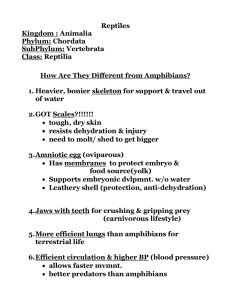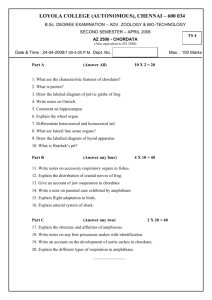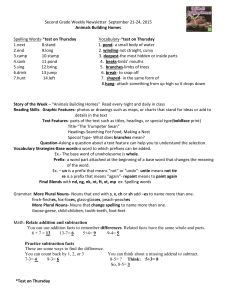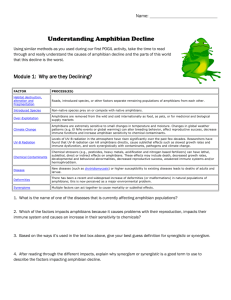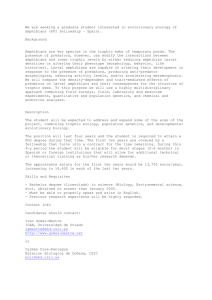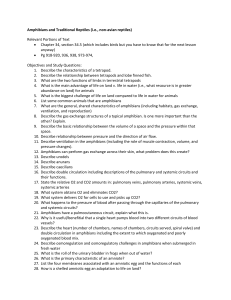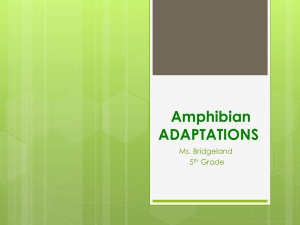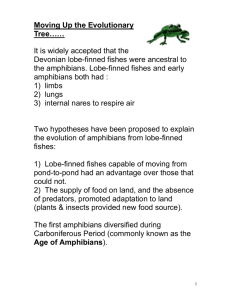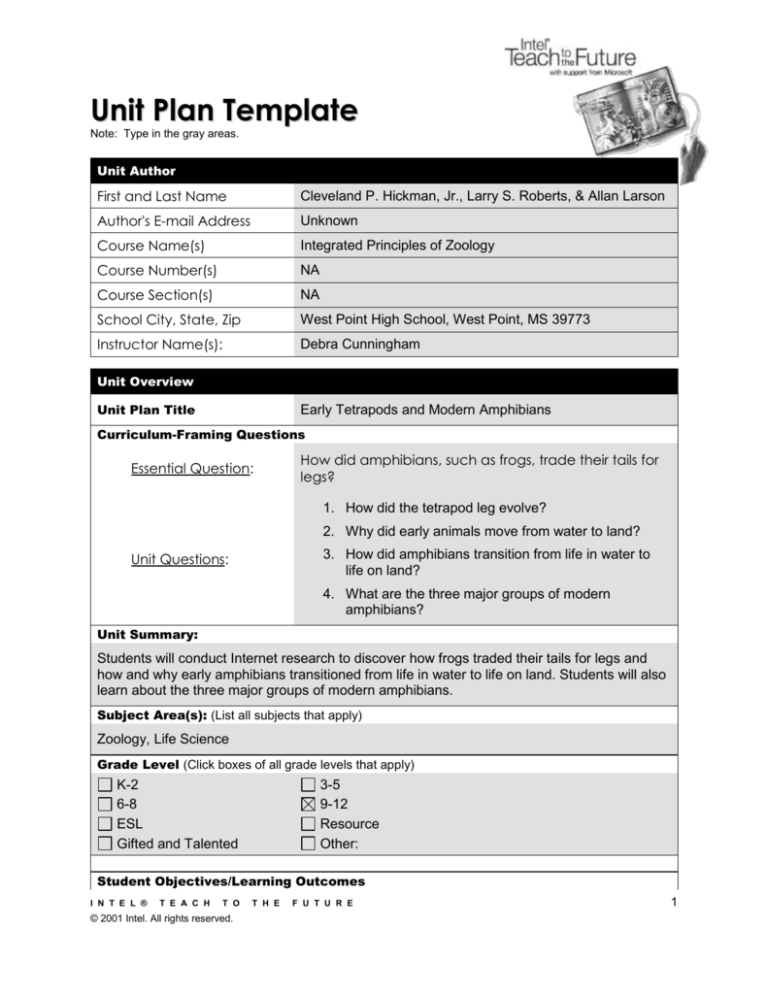
Unit Plan Template
Note: Type in the gray areas.
Unit Author
First and Last Name
Cleveland P. Hickman, Jr., Larry S. Roberts, & Allan Larson
Author's E-mail Address
Unknown
Course Name(s)
Integrated Principles of Zoology
Course Number(s)
NA
Course Section(s)
NA
School City, State, Zip
West Point High School, West Point, MS 39773
Instructor Name(s):
Debra Cunningham
Unit Overview
Unit Plan Title
Early Tetrapods and Modern Amphibians
Curriculum-Framing Questions
Essential Question:
How did amphibians, such as frogs, trade their tails for
legs?
1. How did the tetrapod leg evolve?
2. Why did early animals move from water to land?
3. How did amphibians transition from life in water to
life on land?
Unit Questions:
4. What are the three major groups of modern
amphibians?
Unit Summary:
Students will conduct Internet research to discover how frogs traded their tails for legs and
how and why early amphibians transitioned from life in water to life on land. Students will also
learn about the three major groups of modern amphibians.
Subject Area(s): (List all subjects that apply)
Zoology, Life Science
Grade Level (Click boxes of all grade levels that apply)
K-2
6-8
ESL
Gifted and Talented
3-5
9-12
Resource
Other:
Student Objectives/Learning Outcomes
I N T E L ®
T E A C H
T O
© 2001 Intel. All rights reserved.
T H E
F U T U R E
1
TSWBAT:
● Describe the evolution of the tetrapod leg
● Explain how early amphibians transitioned and adapted to life on land
● List the three major groups of modern amphibians, characteristics of each, and principle habitats
● Describe and illustrate the life cycle of a frog
Targeted State Frameworks/Content Standards/Benchmarks
MS Content Standards:
○ Recall - differentiate among vertebrate characteristics (i.e. habitat, reproduction) (DOK 1)
○ Recall- describe life cycles and metamorphosis of amphibians (DOK 1)
○ Skill/Concept.- evaluate unique protective adaptations of animals (amphibian) related to
survival (DOK 2)
○ Strategic Thinking - compare and contrast ecological relationships about terrestrial and
aquatic ecosystems under certain circumstances (DOK3)
○ Strategic Thinking - inquiry-based process – communicate and defend scientific argument
in oral, written, and graphic form (DOK 3)
Science as Inquiry NSES Standard A
NSES Content Standard C
Procedures
► Students will read Chapter 27 of their textbook for homework over a five-day period and
record data from their daily reading in a science journal.
► Students will conduct Internet research and prepare a two-page research paper describing
how the tetrapod leg evolved. A bibliography page will be required.
► Students will illustrate the life cycle of a frog and give an oral presentation to the class.
Students will be allowed to use their imaginations and their artistic or technological skills for
this presentation. Drawings, posters, PowerPoint presentations, or other artistic mediums will
be acceptable for this project.
Approximate Time Needed (Example: 45 minutes, 4 hours, 1 year, etc.)
Five 50 minute class periods
Prerequisite Skills
NA
Materials and Resources Required For Unit
I N T E L ®
T E A C H
T O
© 2001 Intel. All rights reserved.
T H E
F U T U R E
2
Technology – Hardware (Click boxes of all equipment needed.)
Camera
Laser Disk
Computer(s)
Printer
Digital Camera
Projection System
DVD Player
Scanner
Internet Connection
Television
VCR
Video Camera
Video Conferencing Equip.
Other:
Technology – Software (Click boxes of all software needed.)
Database/Spreadsheet
Image Processing
Desktop Publishing
Internet Web Browser
E-mail Software
Multimedia
Encyclopedia on CD-ROM
Web Page Development
Word Processing
Other:
Printed Materials: Textbook
■ Notebook or journal
Supplies:
■ Art supplies or computer access & paper for project.
□ http://www.mhhe.com/zoology
□ http://www.scienceclarified.com/Al-As/Amphibians.html
Internet Resources:
□ http://www.allaboutfrogs.org
□ Other amphibian websites to be determined by students
Others:
NA
Accommodations for Differentiated Instruction
TSW conduct research about evolution of tetrapod leg and
make a list of important facts.
Resource Student
TTW assist student in putting research paper in proper form.
TSW prepare a newsletter using information gathered from
his/her research project.
Gifted Student
TTW post newsletter(s) on classroom bulletin board and
give extra credit grade.
Student Assessment
◘ Daily journal/notebook
◘ Class participation
◘ Research paper
◘ Project: Life cycle of a frog
◘ Chapter test
I N T E L ®
T E A C H
T O
© 2001 Intel. All rights reserved.
T H E
F U T U R E
3


